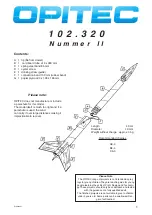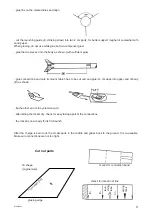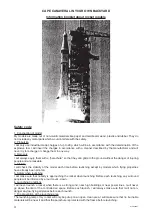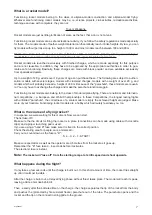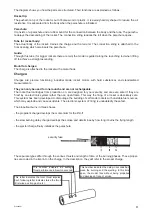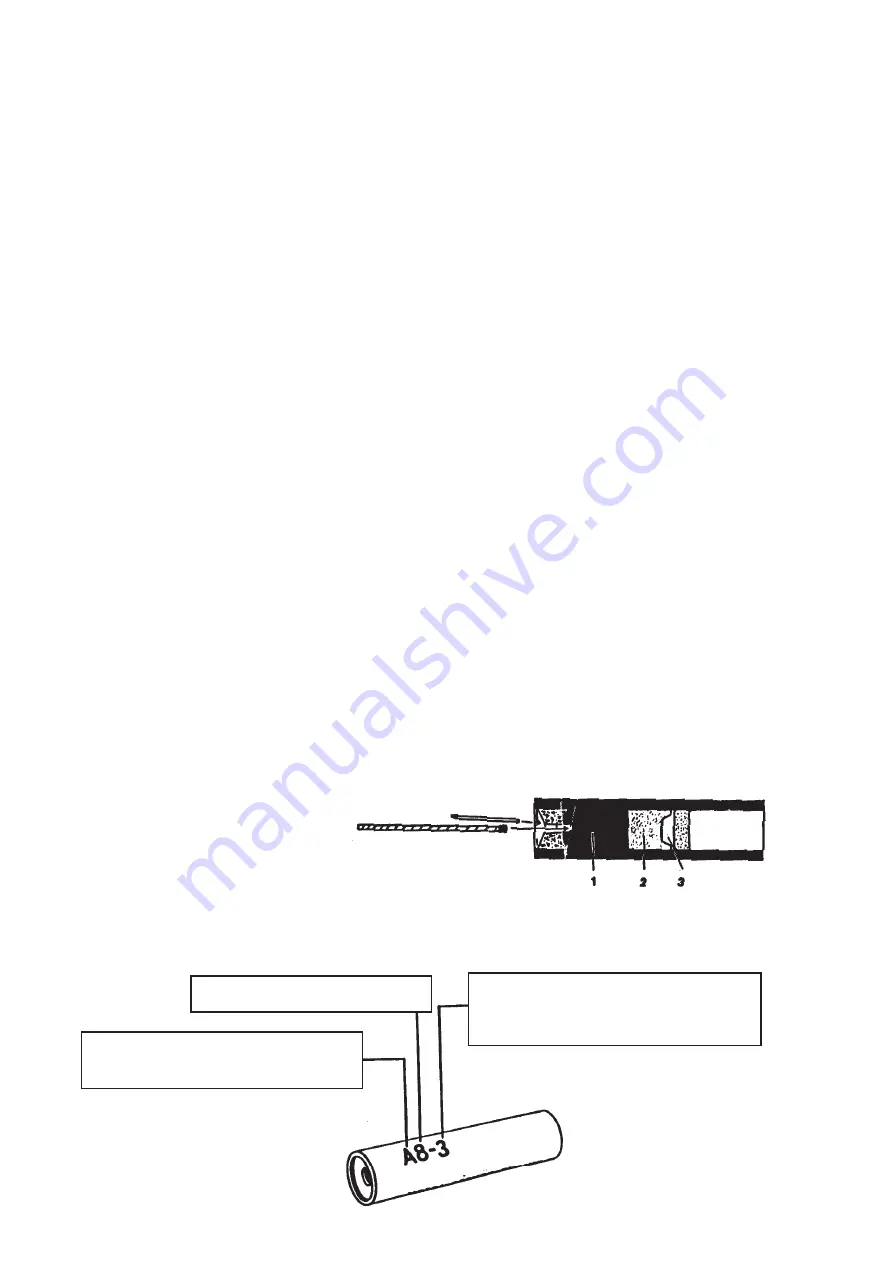
9
E102320#1
Charges:
Charges are precise functioning industrial made rocket motors with hard substances and standardized
measurements.
They can only be used for one launch and are not rechargeable.
The rocket fuel cartridges from production on, are designed for your security, and are even safer if they are
'fired' by an electronic system rather than an open flame. This way the firing of a rocket is absolutely safe.
This system has been developed to discourage the building of self made rockets with unstable fuel sources,
which may explode and cause accidents. The electronic system of 'firing' is undoubtedly the safest.
The propellant burns in three phases:
- the propellant charge develops the momentum for the lift-off
- the slow burning delay charge develops the smoke and determines by how long it burns the flying length
- the ejector charge finally initializes the parachute
security fuse
The separate types differ through the various thrusts and length of time of the burning phases. These proper-
ties are coded in the imprint on the charge. In the description, they will refer to the proper charge.
This number indicates the average
thrust performance in Newton seconds.
This letter indicates the total thrust impulse.
Each following letter indicates twice the thrust
(B is twice as strong as A etc.).
This number indicates the delay in seconds bet-
ween the burning and the ejecting. In this time
span, the model flies without being propelled
and develops a trace of smoke
The diagram shows you how the parts are structured. Their functions are explained as follows:
Rocket tip:
The pushed-on tip of the rocket is out of balsa wood or plastic. It is aerodynamicly shaped to reduce the air
resistance. It is separated from the body when the parachute is initialized.
Parachute:
It consists of a parachute and a rubber band for the connection between the body and the tube. The parachu-
te delays the descending of the rocket. The connection string reduces the jolt when the parachute opens.
Tube for rocket body:
The actual body of the rocket. Carries the charge and the tail unit. The connection string is attached to the
front opening which also bears the parachute.
Guide:
Through this tube (for bigger rockets there are two) the model is guided along the launchlng rod when lifting
off to achieve a straight ascending.
Mount for charges:
The charge is attached to the rocket with a metal hook.
Summary of Contents for 102.320 Nummer II
Page 10: ...10 E102320 1...

